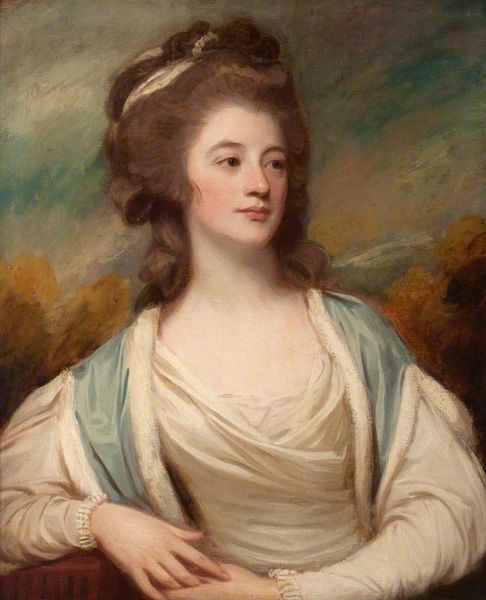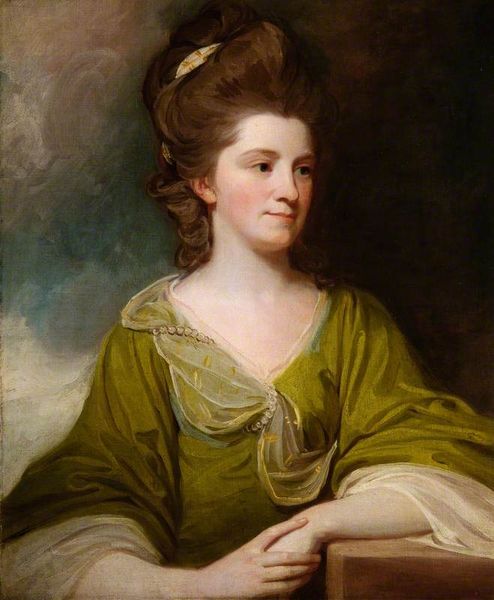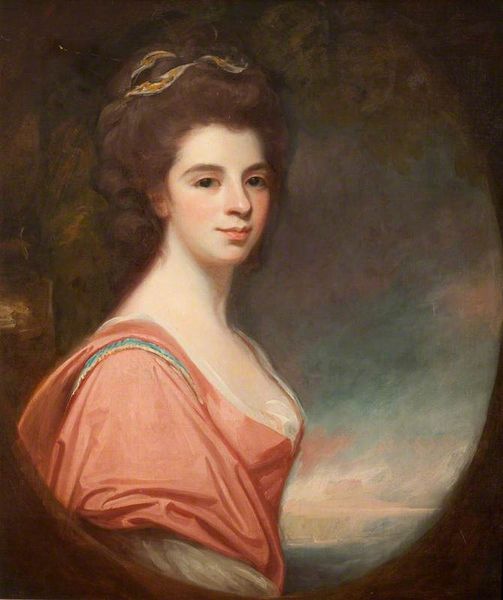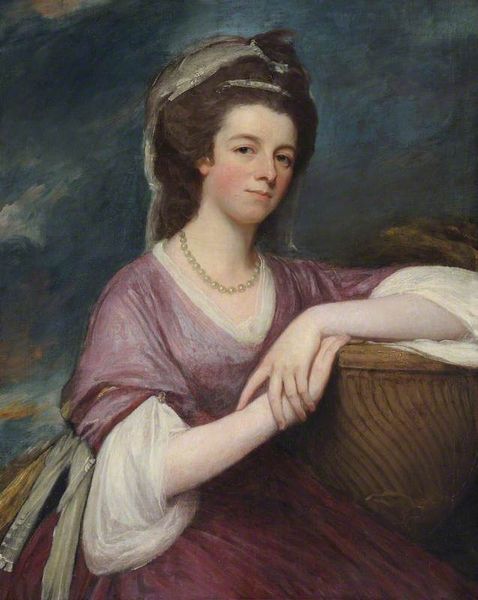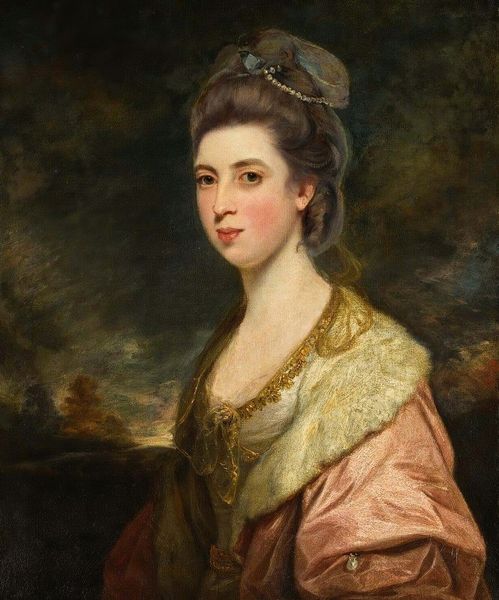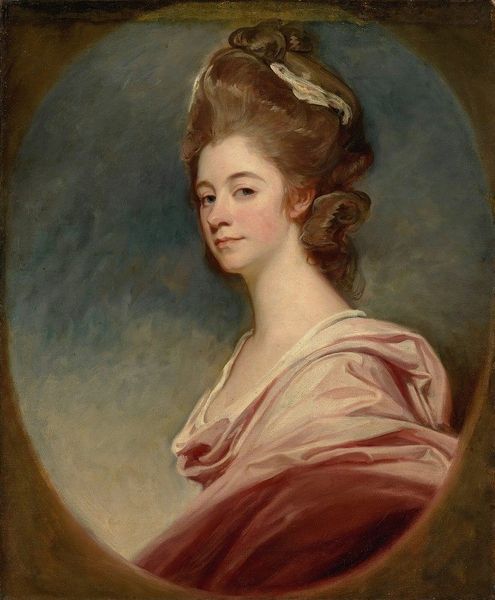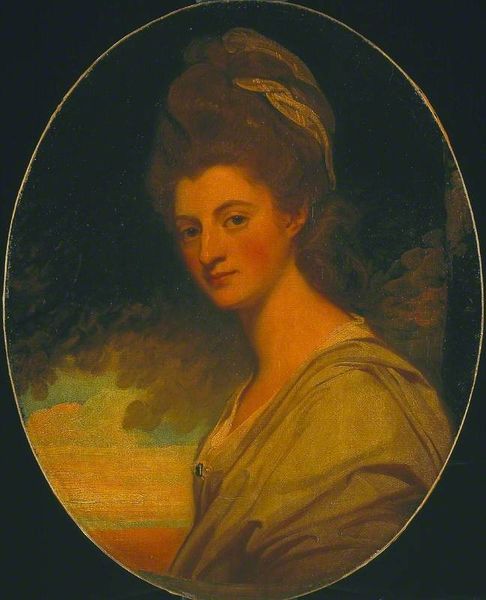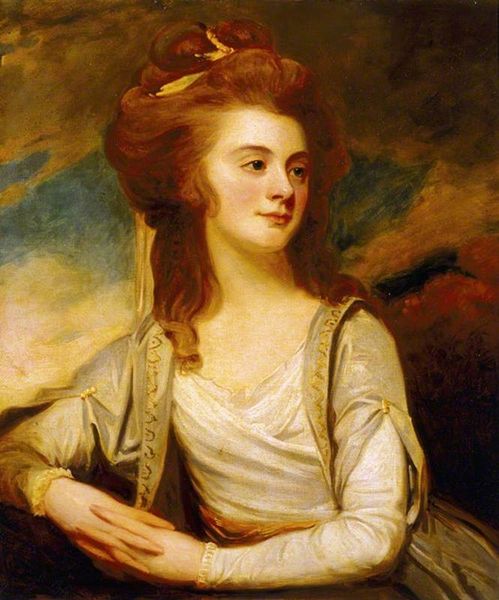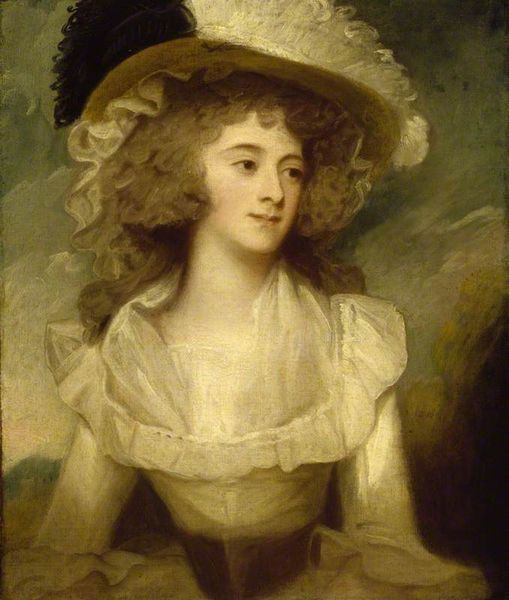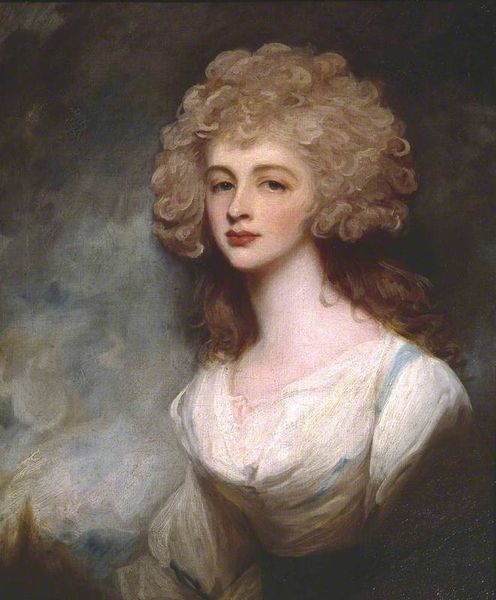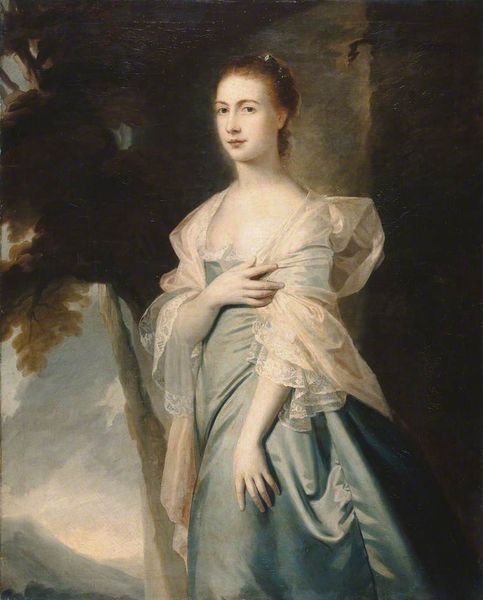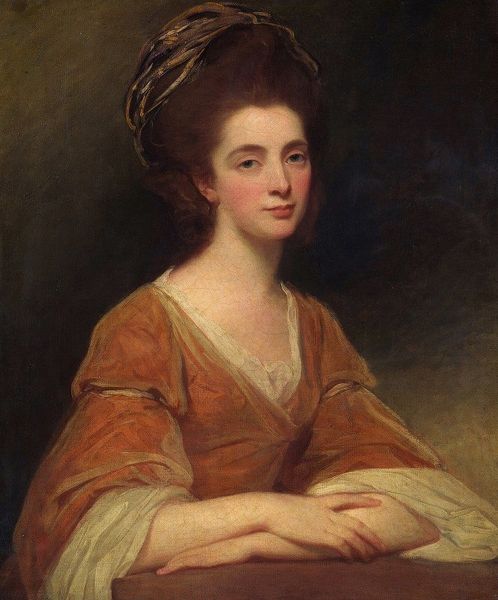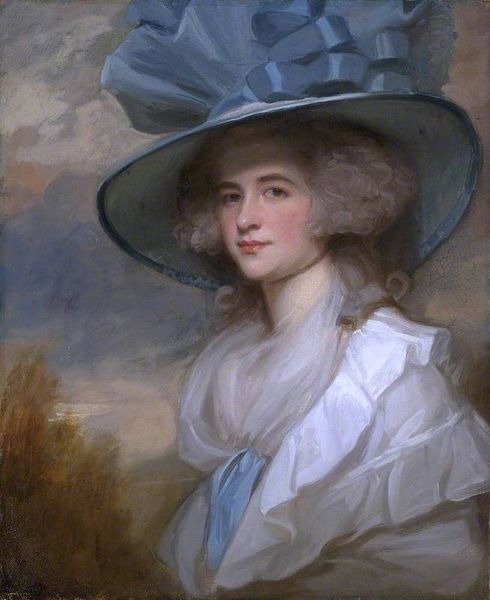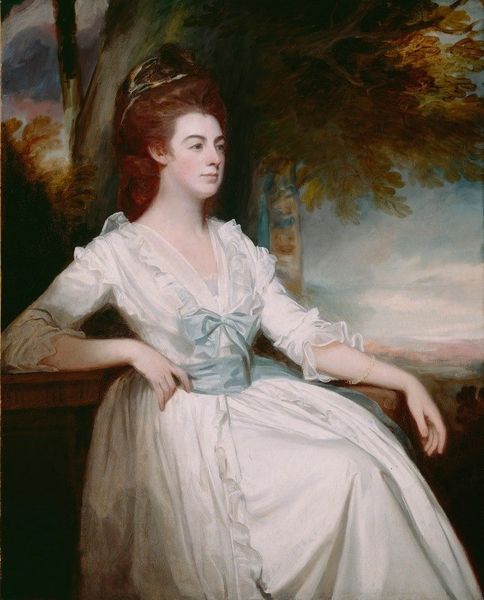
Copyright: Public domain
Curator: Here we see George Romney’s "Lady Emilia Kerr," an oil painting dating to around 1780. It’s a striking example of late 18th-century portraiture. Editor: It strikes me as incredibly romantic and melancholy. Her gaze is soft, but direct, set against that dramatic, stormy backdrop. It’s an image steeped in the idealized version of aristocratic womanhood. Curator: Indeed. Romney, as a leading portraitist of his time, understood how to cater to the elite. Lady Emilia, draped in that elegant gown with its gold trim, projects a certain social status. It reflects the aesthetic values and class hierarchies of the period. Editor: But it also masks, or at least subtly acknowledges, a degree of constraint. The era idealized feminine virtue and beauty, but women of the time often lacked real power. How much of her personality is revealed, and how much is a performance of what society expected? Curator: Precisely. Think about the staging of the portrait within its historical moment. Romney moved in specific circles, and commissions like these weren't accidental. Lady Emilia, or her family, consciously sought to project a certain image through this piece, reinforcing their position in society. The landscape, visible behind her, hints at the estates and privilege she represents. Editor: It also offers a sort of counterpoint to her individual presence. She's framed by nature, almost overwhelmed by it, even though she represents ownership and control of that very landscape. It hints at an interesting tension. Also, I am drawn to how his loose brushstrokes and the softness of the colors seem to foreshadow later developments in Romanticism. It feels as though it exists right at a cusp. Curator: Absolutely, and while the portrait does offer a specific visual narrative around femininity and social standing in Georgian society, it also speaks to the larger history of portraiture's use in shaping social perception. Editor: I appreciate the artist’s ability to create such a visually stunning work of art. By understanding the social and gendered conventions it invokes, we can engage more critically with the construction of identity and status within art, even centuries later. Curator: Well, through that close analysis, we find this portrait isn’t merely a depiction of a woman. Editor: Right, it serves as a snapshot of a historical power structure, revealing both what it celebrated and, perhaps inadvertently, what it obscured.
Comments
No comments
Be the first to comment and join the conversation on the ultimate creative platform.
